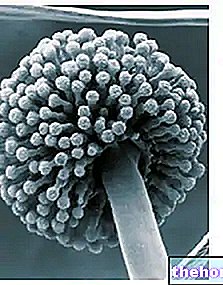Influenza is an acute infectious disease, highly contagious and epidemic; it affects the upper and lower respiratory tract, manifesting itself with symptoms such as fever, cough, sneezing, general malaise and musculoskeletal pain.
responsible for the flu are viruses belonging to the family of Ortomixoviridiae, which includes three genera: influenza type A, more common, type B and less widespread C.
One of the peculiar characteristics of these microorganisms lies in the frequency with which they undergo changes in the external structure of the capsid, a particularity - this - which alters its antigenicity and infectious properties. The influenza virus type A is subject to greater antigenic variations and minor, type B only has minor mutations, while type C is homogeneous. This great antigenic variability, almost annual for type A strains, explains why every winter we find ourselves struggling with a different type of flu, to which the cells of the immune system must adapt. Likewise, new vaccines need to be produced every year based on predictions about the strains that will cause the disease.
The alteration of the antigenic structure of the virus gives rise to viral strains against which there is no resistance on the part of the population and, therefore, induces the development of epidemics limited to the winter months (viruses A and B), or even pandemics (virus A) that appear every 10-30 years with dramatic results (in that of 1918, the "Spanish" flu claimed over 75 million victims).
it is a disease with a rather short incubation time (from a few hours up to three days); arises with nonspecific symptoms, characterized by cold, fever (moderate to high), intense headache (especially frontal), widespread myalgia, loss of appetite and a state of prostration; respiratory symptoms occur almost immediately, including rhinorrhea, sneezing, lacrimation and cough, at first dry, then of the catarrhal type with mucous or mucopurulent sputum (therefore with traces of pus). These general symptoms are sometimes joined by manifestations affecting the gastrointestinal tract (nausea, vomiting and diarrhea), especially in children.
To know more:
- Flu symptoms
- Flu Symptoms: How To Recognize Them? Cold or Flu?
Symptoms of pneumonia, which include a productive cough with expectoration, high fever, and difficult and painful breathing, should prompt the individual to seek prompt medical attention.
it is implemented in the first instance by keeping one's immune system healthy, through a healthy and balanced diet associated with an active lifestyle and an "optimal management of daily stress. Basic hygiene rules are very important, such as carrying your hands to the mouth when coughing and sneezing, always washing them before meals, after going to the toilet and on all the occasions listed in this article.
Insights:
- Flu vaccine
- How to Prevent Seasonal Flu
Some antiviral drugs, such as amantadine and rimantadine, can reduce the severity and duration of the flu, as long as they are administered at the first symptom signs (within the first 48 hours of illness); Recently, good results have been obtained with therapy based on zanamivir, a drug to be taken by inhalation, always within the first 48 hours of illness.
Specific antibiotics can be prescribed by the doctor in the presence of complications, but they are completely ineffective in the treatment of influenza (considering its viral and non-bacterial nature), or even harmful (further weaken the immune defenses).
Other articles on "Influenza"
- Flu Drugs
- Flu diet
- Influenza - Herbal medicine
- Nutrition, Herbal Medicine and Flu
- Influenza vaccine
- Flu Symptoms: How To Recognize Them? Cold or Flu?
- How to Prevent Seasonal Flu




























